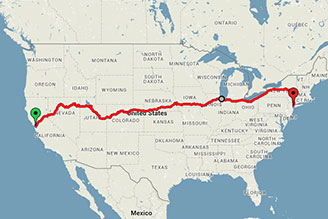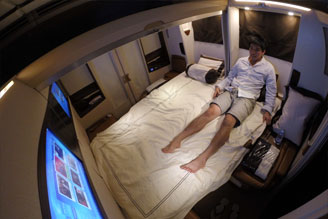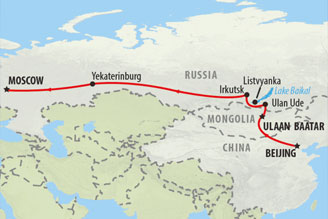I travel to Ecuador's remote islands to find giant tortoises and fearless birds.

It’s been more than 300 years since Charles Darwin arrived, rode on giant tortoises (he actually did), and formulated his theory of evolution. Yet, somehow, the Galapagos Islands remain mostly untouched. This is one of the few places left on the planet where the footprint of human presence is kept to a minimum.
Millions of years isolated from the rest of the world, the fauna and flora on the Galapagos have evolved differently. Here, you’ll find hundreds of endemic species — plants and animals not found anywhere else in the world.



In January 2014, I decided to check it for myself.
This is my trip in photos.
Follow me
Keep up with my latest adventures
The best way to visit the Galapagos is to take a cruise.
Cruises range from cockroach-infested cabins to luxury yachts. I found a spot on a first-class ship, the M/V Santa Cruz, at a steep 50% discount.

You’ll sleep aboard the boat and set foot on land for a few hours every day to tour the islands. This minimizes any environmental impact.

Onboard, it was fantastic. There was room service three times a day — I felt like I never had a wet towel in my room for longer than an hour.

Setting foot on land, you can’t help thinking you’ve stumbled upon an alternate universe, some strange utopian colony organized by sea lions.

As per national park rules, a certified naturalist guide has to bring you around.

If you imagine the Galapagos teeming with lush green vegetation, you’ll be surprised to find that the landscape looks more like the surface of the moon.


Uninterrupted by human activities, animals live in harmony, forming a society arranged on principles of mutual cooperation..

Soon, you’ll realize what’s truly incredible:
The animals have evolved so isolated from human beings that they’re not afraid of people.
Giant tortoises, sea lions, penguins, iguanas and birds can all be seen and approached.

Nowhere else can you engage in a staring contest with wild animals and lose.

The fearless creatures that call the islands home act as if humans are nothing more than slightly annoying paparazzi.

In a strange land of strange animals, none is more iconic than the Giant Tortoise.

Known as Galápago in Spanish, the islands are literally named after them. They live over 150 years and weigh up to 350 kg.

You’ll keep bumping into Blue Footed Boobies, the iconic bird of the Galapagos.

You’re probably thinking of something else, but the Boobies actually derive their name from ‘Bobos’, meaning stupid or foolish.

When Tomás de Berlanga discovered the Galapagos by accident in 1535, he described to King Charles V of Spain that the birds were ‘so silly that they didn’t know how to flee and many were caught by hand.’
But the truth is, the real stupid ones are amongst us.

And to illustrate the process of natural selection, we throw these people off the ship.

This family of Orcas showed up to watch.

Oh hey, look at this Magnificent Frigatebird.

The males come with airbags installed.

When you’re bored of the amazing animals, there’s also amazing geology.
Everything from a red beach…

…to an underwater crater.

In fact, underwater is where the Galapagos really comes to life.
On my last day in the Galapagos, I went scuba diving.
Massive schools of fish are a regular sight.



Which makes a delicious meal for Hammerhead sharks.


When the Sea Lions are not sleeping on land, they are… sleeping in the water.

But the Galapagos Islands are not without its own problems.
The introduction of foreign species is one of the major challenges the archipelago faces.
All bags into the Galapagos are disinfected with a phenothrin spray.

Of course, this doesn’t stop people from bringing in domestic animals. Goats, pigs and rats caused the extinction of native species in just a few years — the goats themselves are thought to be responsible for the extinction of four to five species.
On June 24, 2012, a Galapagos giant tortoise named Lonesome George died. He was the last of his subspecies.

It gets quite depressing to see this tragic piece of news everywhere.

But that's okay…
In the Galapagos, there are always baby sea lions nearby to make you feel instantly better.

How much did it cost me?
$1710, give or take.
| How much? | For what? |
|---|---|
| $325 | Flight from Quito to Galapagos (round-trip) |
| $1225 | First-class 5D4N Cruise |
| $160 | Scuba Diving at Kicker Rock |
| $1710 | Total |
Prices are per person. This is a reasonable estimate and you can do it for much less.



